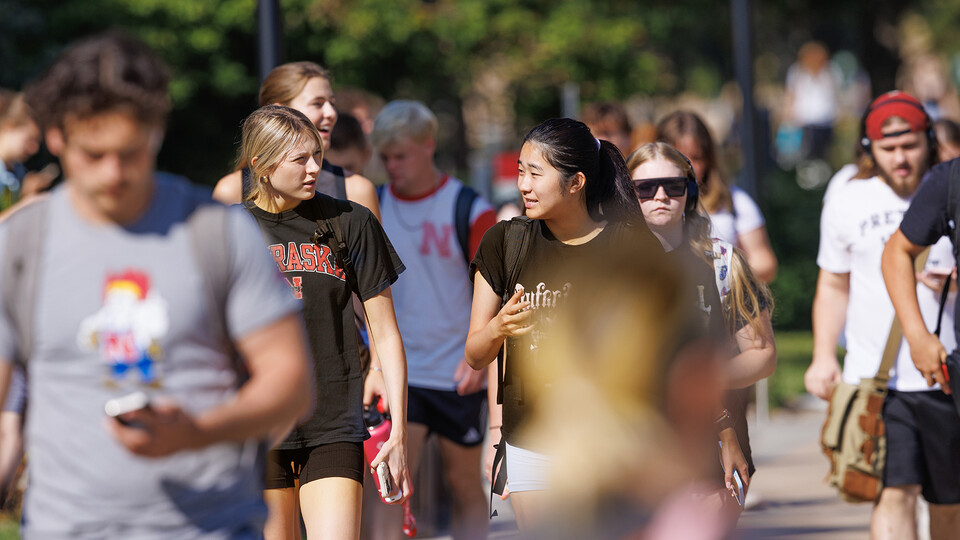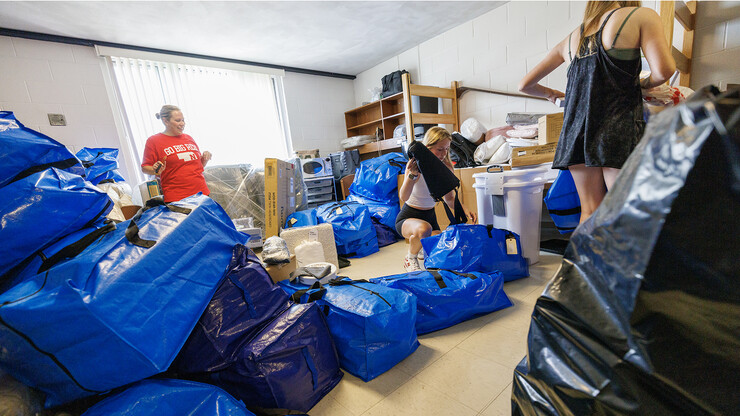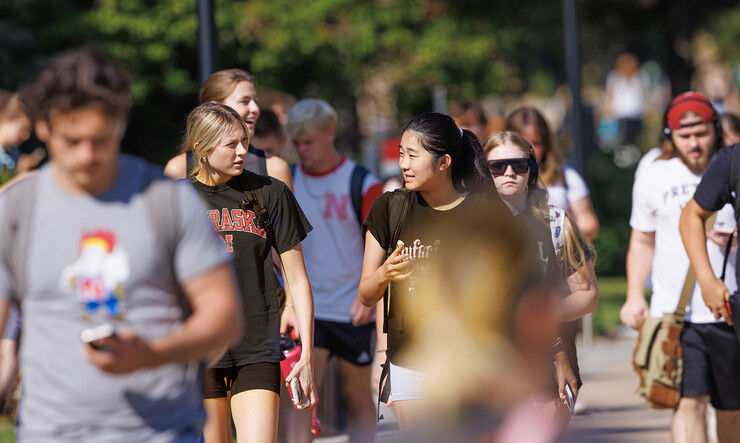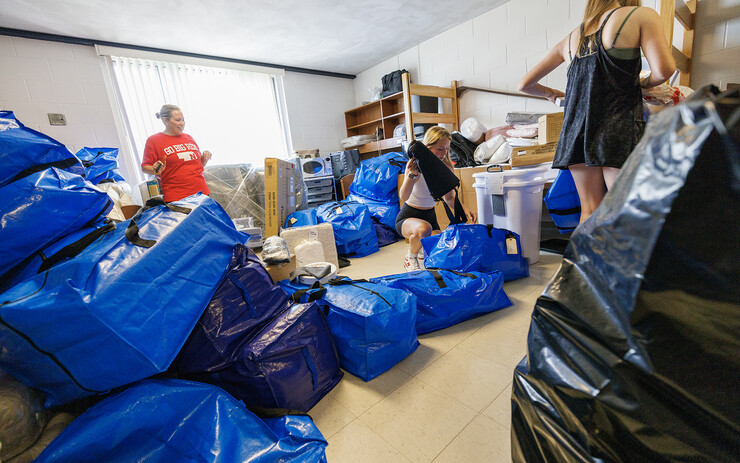· 5 min read
Student body grows in total Nebraskans, first-time Huskers, diversity

A journey to infuse her entrepreneurial spirit into a future career led Rising City’s Alexa Carter directly to the University of Nebraska–Lincoln.
Carter is one of 3,545 first-time freshmen from Nebraska who are attending the university this fall. That total reflects a 3.6% increase from 2022 and is the largest group of homegrown, first-year Huskers in more than five years. The university’s overall total of first-time freshmen from around the globe is 4,699, an increase of 1.3% from last year.
For Carter, coming to Nebraska’s flagship, land-grant institution was an easy choice. She knew the university well, having grown up attending camps on campus and being active in 4-H. Participation in the Nebraska Youth Beef Leadership Symposium led her to developing an award-winning concept for “Chili Rolls,” a treat that joins the sweet and savory majesty of the Midwest’s legendary chili and cinnamon rolls.
“We combine the meat, peppers, onions and all the big flavors of the chili into a filling that we put inside the cinnamon roll,” Carter said. “We even top them with frosting. They are pretty good, and the response has been positive.”
Now, Carter seeks to elevate the idea as part of the university’s Engler Agribusiness Entrepreneurship Program, which helps its scholars build their own enterprise from the ground up. The program is part of the College of Agricultural Sciences and Natural Resources, which enrolled 503 first-time first-year students this fall, an increase of 6.1% from 2022.
Carter has already developed the recipe further through a one-on-one consultation with Wahadi Allen, the university’s executive chef. And Tiffany Heng-Moss, dean of the College of Agricultural Sciences and Natural Resources, has responded with interest in serving the treats at upcoming East Campus events.
“The support I’ve received has been incredible,” Carter said. “It is proof to me that I made the right choice and that the University of Nebraska–Lincoln has always been the place where I belong.
“I can’t wait to see where the next few years here take me.”
Among the university’s individual colleges, undergraduate enrollment in Architecture grew 7.7%; Engineering is up 5.5%; and Journalism and Mass Communications increased 3.6%.
The College of Engineering set a historic high of 3,413 undergraduates this fall — which extends an 11-year enrollment growth trend for the college.
As of Aug. 29, the overall student enrollment for the university was 23,600, which represents a decline of 0.9% from 2022. The university tracked dips in undergraduates (down 230 total, 1.2% from 2022) and graduate students (down 15, or 0.4% from 2022), while professional program enrollment grew by 40 (up 6.8% versus a year ago).
“Growing our enrollment remains a priority and, while down slightly today, we are seeing several positive trends and identifying strengths to build upon for tomorrow,” Chancellor Rodney Bennett said. “We are excited to see more students coming to campus from communities across Nebraska. And, we remain focused on strengthening retention efforts that will help more of these students persist to graduation.
As the state’s land-grant institution, we are committed to fulfilling our promise of developing future leaders for Nebraska and the world.”
The university continues to draw students from across the nation and world, including double-digit (or better) first-time freshmen growth regionally from Wyoming (up 225%); Michigan (100%); Missouri (32%); Minnesota (17%); and Colorado (11%).
Alyssa Hurlock of Minnesota said several factors helped UNL stand out from the 12 universities considered by her triplet daughters.
“We toured campus twice, and it just felt like home,” Hurlock said. “Everyone was so sweet and kind. Any question we asked, seriously, people would drop what they were doing to answer. We did not get that kind of service at any other university we considered.”
Other factors that led the three Hurlock daughters to enroll at the university include affordability, availability of majors, distance from home, low crime rate, and communication from the schools.
“People always ask us: ‘Why Nebraska? There is nothing to do there.’ Well, there is plenty to do in Lincoln, and our daughters are loving every minute of it,” Hurlock said. “The people there are amazing. The campus is beautiful. And affordability, especially in terms of a Big Ten degree, is incredible.”
Additional notes on UNL’s enrollment, gathered via an annual census held Aug. 29, include:
For the 11th straight year, the university has its most diverse student body ever:
- 18.8% of all Huskers enrolled (undergraduate, graduate and professional students) are from ethnically diverse populations (up from 18.3% in 2022).
Double-digit undergraduate enrollment increases in several colleges during the past decade, including:
Undergraduate totals in the College of Architecture (up 33%); Hixson-Lied College of Fine and Performing Arts (27.4% increase); and College of Engineering (up 14%);
Graduate totals in the College of Journalism and Mass Communications (up 106.5%); College of Business (up 50%); and College of Engineering (up 28.9%); and
Professional degree programs in Audiology and Hearing Sciences (up 93.3%); College of Architecture (up 34.4%); and College of Law (up 23.9%).
Overall increase in credit hours:
- Despite the 0.9% decline in students enrolled overall, total credit hours being taken this fall increased to 299,808, up 357 from a year ago.










